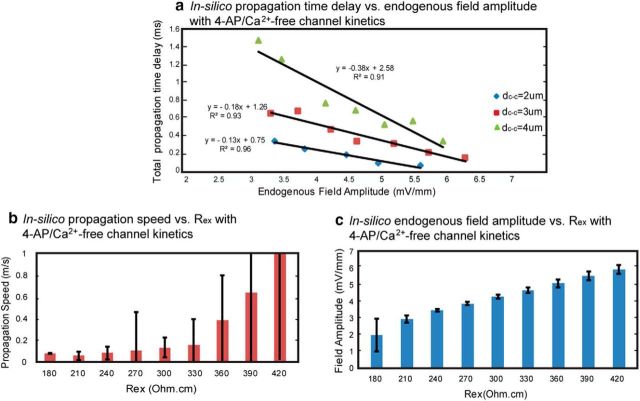Figure 8.
Field amplitude and extracellular resistivity effect on the propagation time delay and speed. a, Relationship between simulated action potential traveling delay time (from Row A to Row C) and endogenous field amplitude generated with various SF values in 4-AP/no Ca condition. For each dc-c group, the time delay decreases linearly as field amplitude increases. b, Propagation speed increases with extracellular resistivity (Rex; n = 3 for each Rex with dc-c = 2, 3, and 4 μm) but there is no significant differences among groups (p > 0.05 with one-way ANOVA). Within the physiologic range or Rex (250∼380 Ωcm, Anatassiou et al., 2011), the speed ranges from ∼0.1 to ∼0.4 m/s. c, Endogenous field amplitude increases with Rex (n = 3 for each value of Rex with dc-c = 2, 3, and 4 μm) but there is no significant differences among groups (p > 0.05 with one-way ANOVA). Within physiologic Rex range, field amplitude ranges from ∼4 to ∼5 mV/mm.

